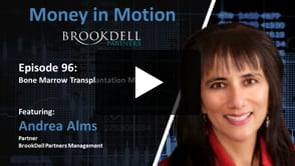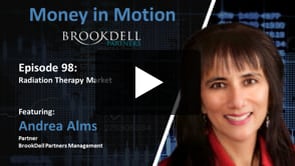Hedge Fund Dashboard:
Top Hedge Fund News, Member Posts, Hedge Fund Daily Indices and more!
Stockholm (HedgeNordic) – Many retirees in the United States choose to sell their life insurance policies in the secondary market for life insurance for a lump sum payout to enjoy the accrued capital. This opens up a market for specialised managers that seems to benefit the entire chain of parties involved, from the person insured and seeking to benefit from their policy still during their lifetime, to the end investor in such vehicles.
In this market, players such as Stockholm-based fund manager Resscapital AB buy policies from individuals who no longer need their life insurance and want an up-front cash payment that is generally higher than the surrender value offered by their insurance companies. “Most individuals selling their life insurance are above the age of 70, are fairly wealthy on aggregate and are generally quite healthy,” explains Jonas Mårtenson (pictured), the founder of Resscapital. “The reason retirees are selling is that they want to avoid paying premiums for many, many years to carry life insurance.”
Four Options for Policy Holders
Life insurance protects a policyholder’s dependents – the beneficiaries of the life insurance policy – in the case of his or her death. The insured generally face four alternatives when deciding on what to do with their policies. “The first option is that the insured continues to pay the premiums and the beneficiaries receive the policy payout,” says Mårtenson, with the payout being a fixed dollar amount stipulated in the insurance contract.
The second option is that the insured stops paying premiums and the policy lapses within two months, “which is the worst option” according to Mårtenson. “The third option involves the sale of the policy to the life insurance company for the surrender value.” The last option is selling to funds such as Ress Life Investments, managed by Resscapital, which “usually pay more than life insurance companies.” By paying more than the surrender values, these funds “add value for the insured.”
Conservative Approach to Buying Policies
When acquiring a policy, Ress Life Investments becomes the new beneficiary and continues to pay premiums to the insurance company until the insured passes away and the fund collects the predefined life insurance amount. By buying no-longer-needed life insurance policies at a discount to face value, Ress Life Investments aims to deliver an annual net return of seven percent in U.S. dollars. To achieve its objective, the team running the fund “takes a very conservative view.”
“We require two expert opinions on life expectancies for each policy we buy, one of which comes from our preferred medical underwriters.”
To start with, “we require two expert opinions on life expectancies for each policy we buy,” explains Mårtenson, “one of which comes from our preferred medical underwriters.” This approach enables Ress to accurately estimate one of the main risks associated with its investment strategy: longevity. “Longevity is the key risk for the strategy of buying life insurance policies, which stems from the fact that people live longer than predicted,” explains Mårtenson. If actual life longevity is longer than the original life expectancy estimate, “we have to pay premiums for a longer time, and the policy pays out later in time.”
“Longevity is the key risk for the strategy of buying life insurance policies, which stems from the fact that people live longer than predicted.”
Mitigating the Longevity Risk
“Our strategy to mitigate longevity risk is to be selective when choosing policies, look for policies with low premiums and look for policies of individuals with long life expectancies,” explains Mårtenson. The team has reviewed over 10,000 policies since Ress Life Investments was launched in April 2011. Only about three percent of those policies made it to the fund’s portfolio. As of the end of December, Ress Life Investments owns 265 life insurance policies with a total face value of $578 million. The ability to build a portfolio with the most attractive policies represents a key attribute that distinguishes Ress from other players in the secondary market for life insurance, reckons Mårtenson.
“Our strategy to mitigate longevity risk is to be selective when choosing policies, look for policies with low premiums and look for policies of individuals with long life expectancies.”
Ress is also distinguished by its focus on policies from healthy retirees with long life expectancies. “It is very difficult for us to buy policies from individuals with a very short life expectancy,” says Mårtenson. “An individual with a four-year life expectancy can easily live five, eight or more years,” which represents a significant risk in the business of buying discounted life insurance policies. “It is challenging even for doctors to assess that a 78-year old has a life expectancy of only four years, even if they have a number of ailments.” To mitigate the risk, Ress Life Investments focuses on longer life expectancies that are associated with more accurate life expectancy estimates. “All in all, our strategy has been to mitigate the longevity risk by buying very few policies, being very selective, and choosing long life expectancies.”
Given the recent coronavirus-fuelled uncertainty in financial markets, “we get many questions about credit risk,” acknowledges Mårtenson. “Are you worried about life insurance companies going belly up?” is one of the questions the Ress team faces. “The answer is no. Insurance will have a tough time, indeed,” reckons the founder of Resscapital, “but they are heavily regulated and backed up by state-guaranteed funds.” Furthermore, the coronavirus crisis “is not a financial crisis. It is an economic crisis”, he argues Speaking of the coronavirus, Mårtenson does not expect an increase in payouts because of the spread of the virus. “It may affect one or two policyholders,” he says, “but statistically speaking, our portfolio is too small for the coronavirus to have a meaningful effect on payouts.”
Sources of Return and Uncorrelation
Resscapital’s approach to investing in life insurance policies seeks to deliver an annual return of seven percent after fees. The return can be seen as arising from three sources, explains Mårtenson. The first source is realized returns stemming from the “policy paying out in cash, which generates a surplus because purchased policies are usually worth much less than the payout amounts.” The second source is the ageing effect. “As times goes by, each policy increases in value since we approach the payout day.” The third source comes from the mark-to-market adjustment resulting from a change in discount rates, which are, in turn, determined by market conditions. “Just like a bond, the values of policies are revalued based on current market conditions” twice a month.
“The main risk factor in a life insurance portfolio – longevity – is fundamentally uncorrelated to other major asset classes.”
“The main risk factor in a life insurance portfolio – longevity – is fundamentally uncorrelated to other major asset classes,” argues Mårtenson. This enables Ress Life Investments to generate returns that are uncorrelated to traditional asset classes. Since its inception, the fund’s correlation with the MSCI World, for instance, stands at 0.04. The fund has generated an annualized return of 3.4 percent since inception with an annualized volatility of 3.4 percent, which results in an inception-to-date Sharpe ratio of one.
This track record, however, also covers the first few years of operations when the fund was busy buying discounted policies (which were not meant to pay out instantly) and had relatively higher fixed costs in relation to assets under management. In the past three years, however, Ress Life Investments delivered a juicier annualized return of 8.3 percent.
According to Mårtenson, the secondary market for life insurance is estimated to have an annual volume of policies sold between $4 to $5 billion, whereas the total market size of outstanding life insurances stands at $20.5 trillion. “It is a drop in the ocean,” highlights Mårtenson. The gradual increase in the supply of policies in the secondary market enables Ress Life Investments to continue purchasing more policies with attractive risk-reward profiles and generate attractive risk-adjusted and uncorrelated returns to investors.
This article featured in the Nordic Hedge Fund Industry Report 2020.
Different Risk-Return Profile for the Secondary Life Insurance Market on HedgeNordic.
Today's Hedge Fund Headlines:
Access Over 250K+ Industry Headlines, Posts and Updates
Join AlphaMaven
The Premier Alternative Investment
Research and Due Diligence Platform for Investors
Free Membership for Qualified Investors and Industry Participants
- Easily Customize Content to Match Your Investment Preferences
- Breaking News 24/7/365
- Daily Newsletter & Indices
- Alternative Investment Listings & LeaderBoards
- Industry Research, Due Diligence, Videos, Webinars, Events, Press Releases, Market Commentary, Newsletters, Fact Sheets, Presentations, Investment Mandates, Video PitchBooks & More!
- Company Directory
- Contact Directory
- Member Posts & Publications
- Alpha University Video Series to Expand Investor Knowledge
- AUM Accelerator Program (designed for investment managers)
- Over 450K+ Industry Headlines, Posts and Updates








